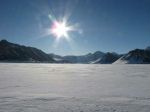
The closeness of agreement among a number of consecutive output values measuring the same input value under the same operating conditions, approaching from the same direction. Usually measured as nonrepeatability but expressed as repeatability, a percenta ...

